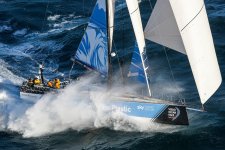Thanks, Bob! Great points!
An additional advantage of most PLBs over EPIRBs is lower initial cost. However, none of them that I can find have a user-replaceable battery, and ACR won’t sell you one. The cheapest online PLB battery service I see is $119 for the ACR Res-q/Res-q+, or $360 every 6 years for Bob’s 3 of them, vs $150 every 10 years for the ACR GlobalFix V4 EPIRB. I don’t mean to come across as implying the ACR and other battery replacement services are any rip-off, they perform a whole ‘battery’ (sorry) of tests that you can consider a recertification of your unit. Most things performed well by experts are not cheap, Surprise!
https://acr.factoryoutletstore.com/cat/ ... 3189a9fd17
From the ACR website:
https://www.acrartex.com/support/faqs/e ... qs/#q-2705
“A Category I beacon automatically deploys when a vessel sinks. The beacon floats free at a depth of 1.5 to 3.0m (4.9 to 13.1ft). The EPIRB can be manually activated while in its bracket or manually removed and activated.” (What Jason bought).
“A Category II beacon is manually deployed.
The EPIRB will automatically activate when removed from its bracket and comes in contact with water, or when it is still in its bracket but a person has lifted the switch to the activation position.” (What I have, and keep in the ditch bag without its bracket, so it activates when water hits it without any other intervention on our part. Toss it out the window, it automatically floats upright, you don’t have to hold it above the water, the antenna is fixed and auto orients to the sky. Not all PLB’s float without an optional float jacket and NONE of them automatically activate in water, so I beg to differ with Bob on the minor point of which requires the least intervention by a conscious boater…I vote EPIRB…cheapo Cat II will do… over PLB. However, you all have no doubt already guessed that I’ll buy a PLB…or 2, or 3…eventually, and my birthday is in April).
After Katrina hit with a 34 foot vertical storm surge, innumerable beachfront homes of boaters were nothing but slabs, but I heard dozens of stories of EPIRBS found under tons of concrete debris that did not break, and many that were still pinging away for many days after the 48-hour standard. For what is essentially some delicate chips and circuits, EPIRBs are almost bulletproof compared to cell phones.
Any EPRIB is better than none, any PLB is better than none, and the easier it is to activate, and the more likely you are to have it with you when needed (like Bob posted), the better.
My impression is that under 10% of C-Brats carry a PLB or EPIRB. Sadly, less than 25% of those signed up for the Hontoon Gathering even listed a VHF MMSI number. Does that mean they don’t have a modern VHF radio, or none at all, or never bothered to obtain a free MMSI number from BoatUS and input it into their VHF, or what? Bob has previously posted that a senior local Coast Guard commander told him that 90% of boaters with DSC-capable VHF radios have never programmed in a free MMSI number, impeding the ability of the red covered ‘Distress’ button to function effectively. If you have one, get this done pronto.
These issues will no doubt generate questions regarding mega-monster Garmin’s acquisition of DeLorme’s In-Reach and it’s Iridium satellite based comm handhelds. I have been burned enough as an early adapter to say I’ll give it 5 years before even considering. Just look at the past 15-20 years of Iridium history. EPRIB/PLBs use standard GOES and other government satellites, and governmental SAR dispatch centers. I’ll only trust them for now.
Sorry to be so in the weeds on a rather arcane technical topic like this.
The name of this game is be educated on the pro’s and con’s of all your alternatives and decide what’s best for you and the ones you love and boat with. There is no single ‘right’ answer for all Brats or all boaters.
John

